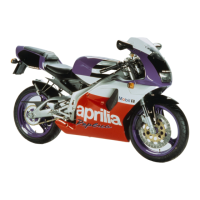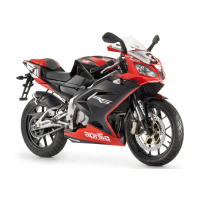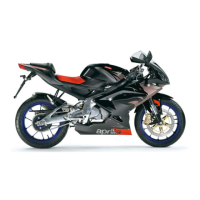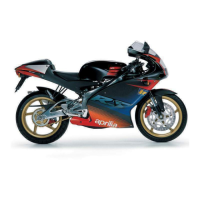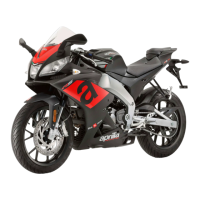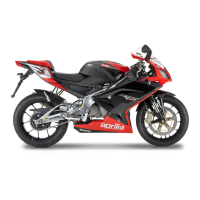72
BATTERY (Fig. 51)
Remember: 1 mile = 1.6 km
1 km = 0.625 miles.
Read page 50 carefully.
Check the electrolyte level and the tightening of the ter-
minals after the first 1000 km and then every 4000 km.
The electrolyte in the battery is toxic and
caustic and if it gets in contact with the
skin it can cause burns, since it contains
sulphuric acid. Wear protection clothes, a
face mask and/or goggles during maintenance
operations. In case of contact with the skin, rinse
with plenty of water. In case of contact with the
eyes, rinse with plenty of water for 15 minutes,
then consult an oculist without delay.
If the electrolyte is accidentally swallowed, drink
a lot of water or milk, then continue with milk of
magnesia or vegetable oil and consult a doctor
without delay.
The battery gives off explosive gases; keep it
away from flames, sparks, cigarettes and any
other source of heat.
During the recharging or the use, make sure that
the room is properly ventilated and avoid inhal-
ing the gases released during the recharging.
Never invert the connection of the battery cables.
Do not incline the vehicle too much, in order to
avoid dangerous leakages of battery fluid.
KEEP AWAY FROM CHILDREN
To check the electrolyte level, proceed as follows:
– raise the fuel tank (see "RAISING THE FUEL
TANK" - page 25);
– extract the battery (1-Fig. 51);
– make sure that the fluid covers the elements com-
pletely (the right level must be included between
the two "MIN" and "MAX" marks that are stamped
on the battery side).
If necessary, top up by adding distilled water.
Fig. 51
c
a
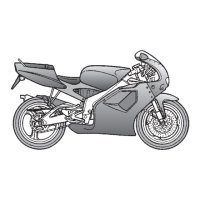
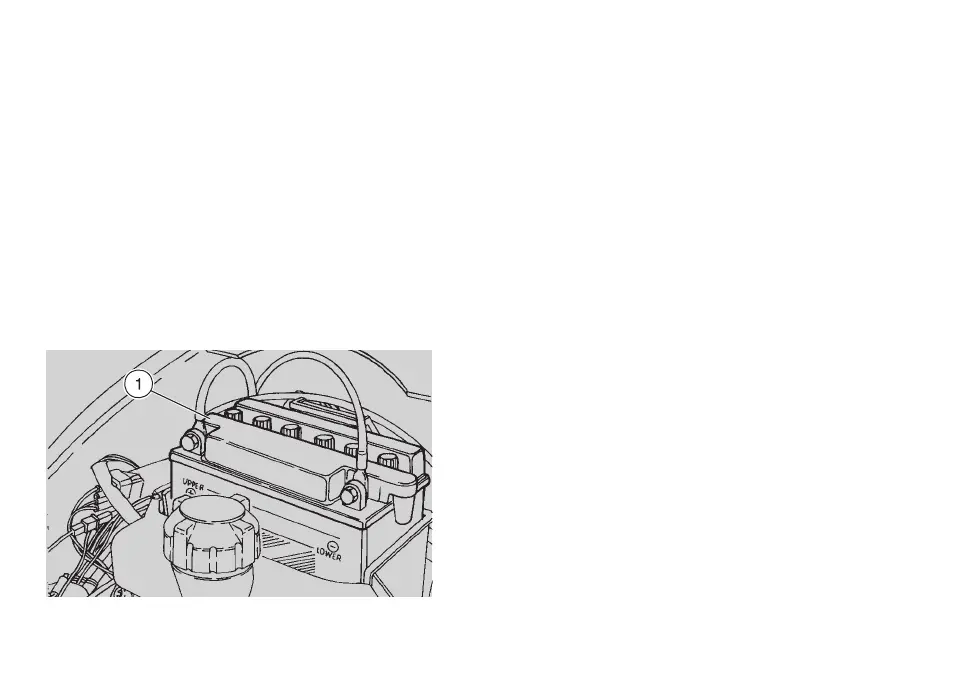